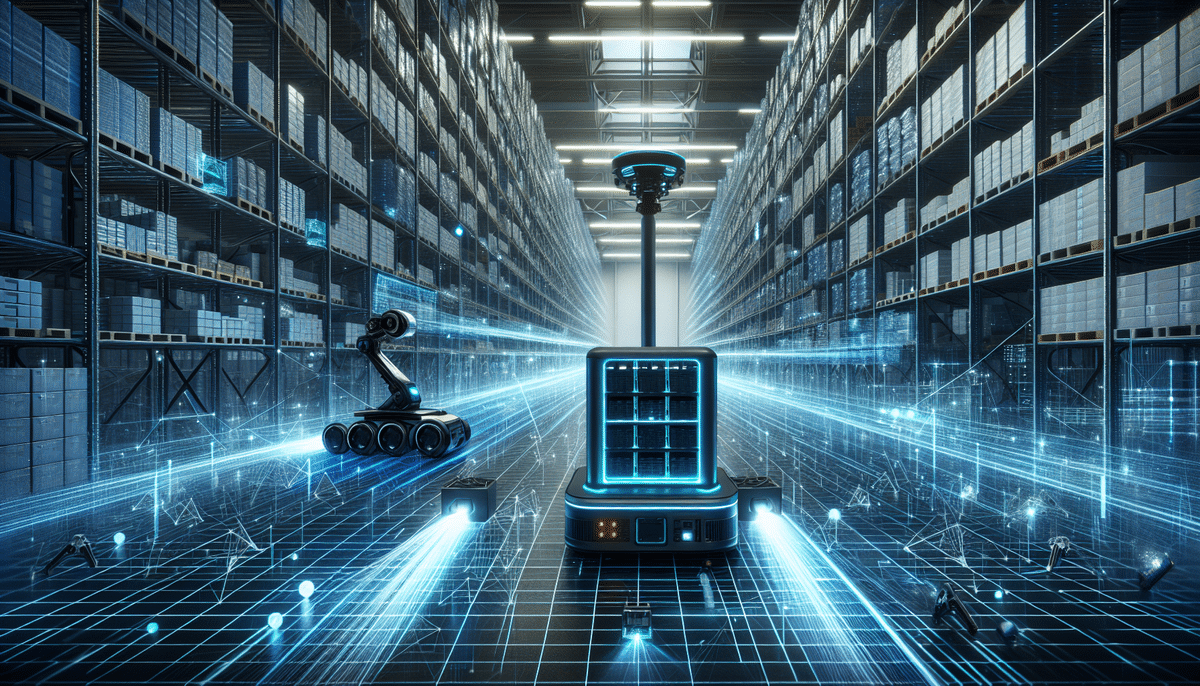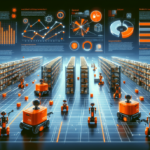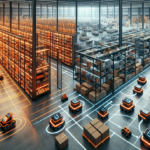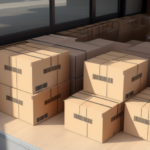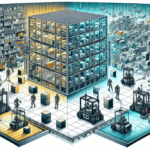Introduction to Warehouse Automation: GreyOrange vs AutoStore
In recent years, the rise of automation technology has transformed the way businesses operate. Warehouse automation has become a crucial component in improving efficiency and reducing operational costs, with warehouse robots leading the charge. Two of the most prominent warehouse robotics systems in the market today are GreyOrange and AutoStore. This article provides an in-depth comparison of these technologies, examining their benefits, drawbacks, and the specific industries they best serve.
Comparing GreyOrange and AutoStore Technologies
GreyOrange Robotics System
GreyOrange utilizes a goods-to-person system that employs autonomous mobile robots (AMRs) to transport items from inventory to packing stations. These robots leverage LiDAR technology for autonomous navigation and communicate seamlessly with backend inventory management systems to ensure accurate and timely item transportation.
AutoStore Robotics System
In contrast, AutoStore operates on a grid-based, goods-to-man approach. Its storage grid consists of vertically stacked bins that hold products, with robots navigating the grid to retrieve requested items. This cube-based storage system maximizes storage density and is particularly effective in warehouses with limited floor space.
Benefits and Drawbacks of Each System
Advantages of GreyOrange
- Flexibility: GreyOrange’s AMRs can be easily reprogrammed to adapt to changes in warehouse layout or inventory.
- Scalability: The system can handle larger items and higher volumes of orders efficiently.
- Advanced Technology: Equipped with machine learning algorithms to optimize routes and improve efficiency over time.
Advantages of AutoStore
- Space Efficiency: The grid-based system allows for higher storage density by stacking bins vertically.
- Energy Efficiency: AutoStore systems are recognized for lower energy consumption compared to some alternatives.
- Modularity: The system is easily configurable to fit various warehouse layouts, making scalability straightforward.
Disadvantages of GreyOrange
- Higher Initial Investment: Requires a larger upfront cost for implementation and setup.
- Complexity: The system is more complex and may require a higher level of technical expertise for operation and maintenance.
- Energy Consumption: GreyOrange systems are known for higher energy usage.
Disadvantages of AutoStore
- Limited Load Capacity: AutoStore robots have a maximum capacity of around 55 pounds, which may not suit all product types.
- Fixed Layout: The grid-based system is less adaptable to frequent changes in warehouse layout.
- Maintenance: While upfront costs are lower, long-term maintenance may require additional resources.
Cost Comparison
The cost of implementing warehouse automation systems like GreyOrange and AutoStore varies based on several factors, including warehouse size, inventory volume, and specific customization needs. While GreyOrange may entail higher initial costs due to its advanced technology and flexibility, AutoStore offers a more modular and space-efficient solution that can be more cost-effective for smaller operations.
Additional costs to consider include:
- Employee training for system operation
- Software integration and customization
- Potential downtime during implementation
For a detailed cost analysis, refer to industry reports such as McKinsey & Company’s insights on warehouse automation.
The Future of Warehouse Automation
Warehouse automation is projected to continue its rapid growth, with industry analysts forecasting the market to surpass $40 billion globally by 2025. Both GreyOrange and AutoStore are at the forefront of this expansion, offering innovative solutions that enhance efficiency, reduce labor costs, and improve energy consumption.
Upcoming advancements include:
- Enhanced AI Integration: Improved machine learning algorithms for better decision-making and route optimization.
- Increased Robotics Collaboration: Better coordination between multiple robots for streamlined operations.
- Sustainability: More energy-efficient systems to align with global sustainability goals.
For more information on the future trends in warehouse automation, visit Forbes Technology Council's report on warehouse automation trends.
Integration and Implementation Considerations
Integrating systems like GreyOrange and AutoStore into existing warehouse workflows requires careful planning and collaboration with IT teams. Key considerations include:
- System Compatibility: Ensuring that the automation system integrates seamlessly with current inventory and order management software.
- Training: Providing adequate training for staff to operate and maintain the new systems effectively.
- Scalability: Planning for future expansion and ensuring the system can scale with business growth.
Consulting with experts and engaging with experienced distributors can facilitate smoother integration and optimize business processes. Resources such as Logistics Management’s guide on robotics integration can offer valuable insights.
Case Studies: Success Stories with GreyOrange and AutoStore
Numerous companies have successfully implemented GreyOrange and AutoStore systems, resulting in significant improvements in efficiency and cost savings:
- DN&K: Partnered with GreyOrange, achieving a 10% reduction in overhead expenses and a 50% increase in order fulfillment speed.
- Timken Company: Adopted AutoStore, leading to a 50% increase in picker productivity and enhanced warehouse operations.
These case studies highlight the practical benefits and return on investment that automated systems can provide. For more detailed case studies, explore AutoStore’s official case studies and GreyOrange’s customer success stories.
Top Industries Benefiting from GreyOrange and AutoStore
A wide range of industries leverage warehouse automation systems to enhance their operations, including:
- E-commerce: Rapid order fulfillment and inventory management to meet high customer demand.
- Automotive: Efficient handling of large and diverse parts inventory.
- Pharmaceutical: Precise inventory control and compliance with regulatory standards.
- Semiconductor: High-density storage solutions for delicate components.
The adaptability and efficiency of GreyOrange and AutoStore make them ideal for businesses looking to scale and optimize their supply chain operations.
Customer Reviews: Experiences with GreyOrange and AutoStore
Feedback from users of GreyOrange and AutoStore has been largely positive, with organizations highlighting the following:
- GreyOrange: Praised for its high-speed performance, customization capabilities, and ability to handle large volumes of orders. Users note a steeper learning curve but appreciate the extensive support and flexibility offered.
- AutoStore: Valued for its compact design, energy efficiency, and ease of integration. Users commend its space-saving capabilities and user-friendly interface.
For more user insights, visit review platforms such as TrustRadius for AutoStore and G2 for GreyOrange.
Final Thoughts: Choosing the Right System for Your Business
Deciding between GreyOrange and AutoStore depends on the unique needs of your warehouse operations. Consider the following factors when making your choice:
- Inventory Size and Type: GreyOrange is better suited for handling larger and diverse inventories, while AutoStore excels with smaller, high-density items.
- Warehouse Space: AutoStore offers superior space efficiency, ideal for warehouses with limited floor area.
- Budget: Assess the initial investment versus long-term maintenance costs for each system.
- Scalability: Consider your future growth plans and choose a system that can scale accordingly.
Ultimately, the best system for your warehouse is one that aligns with your operational goals, enhances efficiency, and offers a favorable return on investment. Conduct a thorough assessment of your current processes and consult with automation experts to determine the optimal solution for your business.













